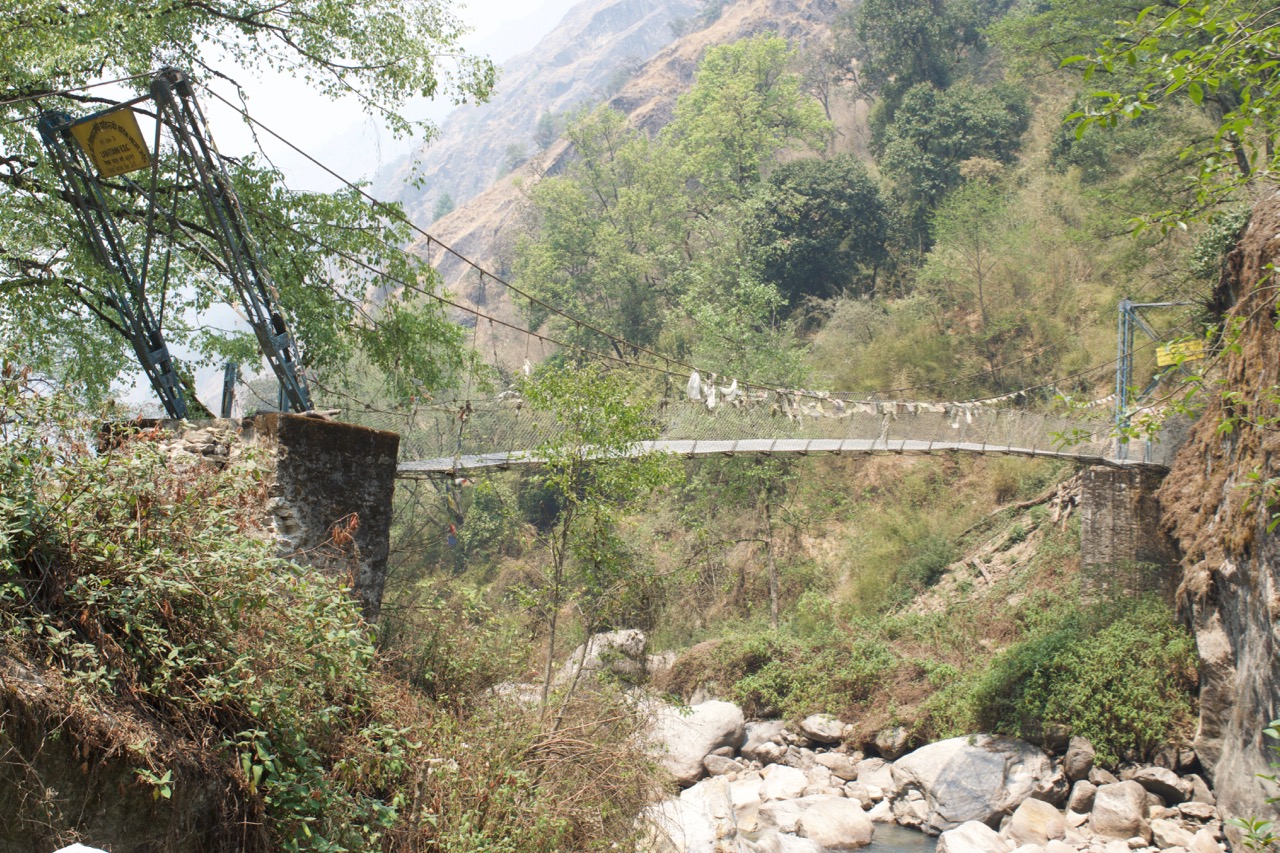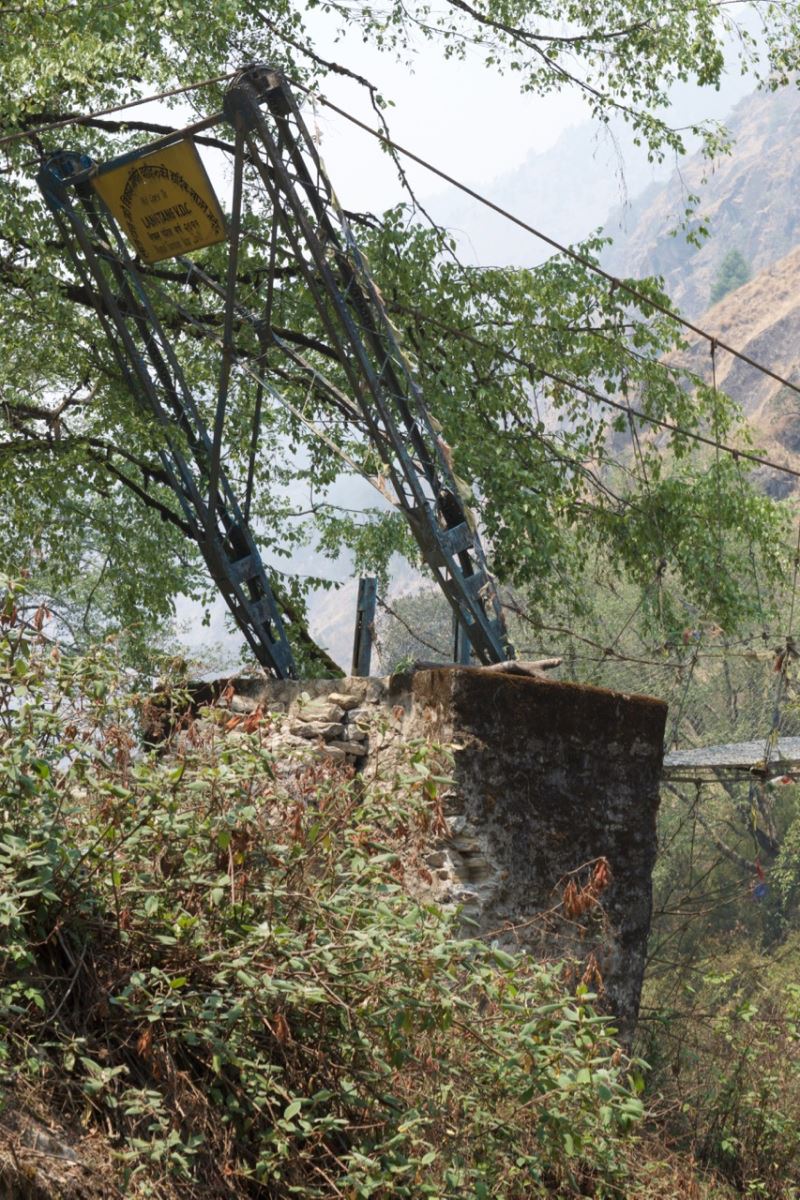The Langtang Valley and Manaslu Circuit were the last trekking routes in Nepal to have their ban lifted by the Foreign and Commonwealth Office, after suffering significant damage to trails and infrastructure in April 2015's earthquake. Richard Goodey of Lost Earth Adventures reports on conditions encountered this spring.
I was able to personally inspect all of the commercial treks we offer last autumn, bar the Manaslu Circuit. Attempts were also made to visit the Langtang, but we were only a few days into the trek when the army turned us back; it was still too soon.
Recently back in Nepal for another trekking season, I heard positive reports from our local guides as well as other sources about the conditions of the routes. But to allay any doubts, I wanted to see for myself before continuing the treks commercially. I did think there might be some truths to the reports though, as I learned we would be sharing parts of the Manaslu Circuit trail with Prince Harry!
Whilst trekking, I specifically looked at and inspected: the trails, the lodges, bridges and evidence of landslides. I also made a written log of all guesthouses.
Manaslu Circuit Trek: Conditions
The Manaslu Circuit, which is normally walked counter-clockwise, is located east of the Annapurnas and north-west of the capital, Kathmandu. Driving through mountain roads, it takes about nine to 10 hours to reach the trailhead in the village of Seti Khola. Initial reports implied the highest level of damage to be along the first few days of the trek, as it was closest to the earthquake’s epicentre.
For the route inspection, former client and architect John Cambridge, whom had previously attempted the circuit in 2014, joined me. Unfortunately his first attempt was cut short by a family emergency. Though not working in an official capacity, John was able to provide valuable insight into the structural integrity of the buildings and bridges.
I specifically looked at and inspected: the trails, the lodges, bridges and evidence of landslides.
Bridges
-
A visual inspection of all bridges and their materials along the trail
-
Inspected the cables and concrete for cracks or deformation
100% of all bridges encountered and crossed were in great condition, safe to cross and to continue to use.
Guesthouses
-
Inspected every guesthouse on the circuit for damage
-
Made an assessment (of the method) of the construction of the building
-
Graded buildings based on what type of method would be most earthquake resistant
-
Listed and graded all buildings in order of overall safety, so that we have an accurate list for future expeditions.
-
Assessed their positioning within the landscape: specifically looking for risk of rock fall and landslips. Fortunately Nepali's know where landslides most likely will occur and build lodges away from these areas.
Of all the buildings assessed, 95% of them were in exceptionally good condition. The other 5%, while showing signs of damage, were being repaired and I am confident that by the autumn trekking season these too will be in habitable condition.
The Trail
The majority of the damage that occurred along the route was from falling rocks and landslides. Shortly after the earthquake, the monsoon season approached, increasing the amount of debris, loose ground and landslides.
During the monsoon months, landslips are a common occurrence and for this reason, I don’t recommend visiting the Manaslu region during monsoon season from July – September.
Over the course of the past 12 months, it is evident that a tremendous amount of trail repair and maintenance has occurred. So much so that the route is even better, with wider, safer trails than before the earthquake.
Conclusion
The Manaslu Circuit has always been an adventurous trek, off the main tourist routes. The region offers some of the most spectacular mountain views, combined with a thriving Himalayan culture. Post-earthquake, this still hasn’t changed. Over the years the lodges have improved, as have the trails, and it is evident that the region is back in business and more than ready to accept visitors to its trails.
Langtang Valley, Gosainkunda Lakes and Helambu: Conditions
The Langtang Valley was devastated by the impact of the earthquake, indeed it was the hardest hit trekking route in Nepal and one of the hardest hit regions, period. Many people may have heard the tragic news that an entire settlement, Langtang Village, was wiped out in its entirety by a colossal landslide.
Almost immediately afterwards, the government evacuated the majority of the region’s residents into temporary accommodation in and around the Kathmandu Valley. Residents waited until after the monsoon rains had ended to return to their homes and to begin the rebuilding process.
I’ve trekked throughout the Langtang on countless occasions and it is a place that holds sentimental value. It was here that I first proposed to my wife, even buying her engagement ring from an endearing, aging Tibetan man from Langtang Village. It was also the first commercial trek of Lost Earth Adventures and over the past ten years many friends had been made.
After my official guiding duties were over for the trekking season, I was able to re-visit in April, bringing one of our local guides, Binod, with me to assist with the assessment.
There are two ways to enter the Langtang Valley. One is in good condition, the other needs work.
The Old Traditional Route
Traditionally, people normally enter into the valley by following the path directly next to the left hand side of the Langtang River in the town of Syabru Besi, and so this is where we set off. The path was in good condition, all the way past Dovan until we got to Pairo.
From here we had to cross a cluster of large landslides where at one stage the path was set onto an overhanging section of mud. The paths have lasted six months since the monsoon rains and have had heavy testing from trains of donkeys ferrying goods from the roads into the mountains. However, I would definitely not want to get stuck between landslides in heavy rain or when wildlife are moving above.
The lodges in Bamboo were open, however, the bridge to cross the river to Rimche is severely damaged and is certainly not useable at the moment. There is a huge mound of concrete built to support half of the bridge. Weighing several hundred tonnes, this has been pushed by a landslide about 10 feet, causing huge strain on the cables and bending the turrets into a dangerous position.


Images of the damaged bridge. Photos: Richard Goodey
Although we had witnessed a train of donkeys cross the bridge, it is in my professional opinion that it wouldn’t be a responsible decision to bring commercial trekking groups across it. The bridge is damaged beyond repair and is dealing with forces and angles that it was never intended for.
Based on this information I would recommend entering into the Langtang Valley via Sherpa Gaon, which is described below.
The New Route, Langtang Valley the High Way
The newer route into the Langtang is via Sherpa Gaon, and is actually an improvement on the traditional trail. The trail follows high along the mountainside, offering much better views.
The trails along this route are in perfectly good conditions, lodges are intact and the villages have not seen any damage.
There is one path which is quite exposed for two 25m sections, where there are big drops. The path is 1.5m wide and easy to walk on, but it’s worth mentioning. Donkey trains carrying cargo and goods walk along these paths day in and day out over these sections, so it’s certainly not mountaineering or scrambling.
After this initial section, the lower trail is joined early on at Rimche. Rimche and all of the subsequent villages until you reach Thangsap are in good condition. When the earthquake happened, the vertical 7,200m high south-west face of Langtang Lirung shed the majority of its entire glacier hanging from it.
Whilst avalanches are a daily occurrence on Langtang Lirung, they normally don't fall anywhere near villages as they are sensibly placed far away. This was a freak occurrence. Normally entire glaciers don't fall off mountains.
To put this into perspective, an estimated 40 million tonnes of snow, ice and rocks caused a pressure wave equivalent to half the power of the atomic bomb dropped on Hiroshima.
This pressure wave destroyed the houses in the nearby hamlets of Thangsyap and Langtang Gompa but fortunately didn't head east and remarkably the village of Mundu, 15-minutes walk past Langtang, remained unscathed.
The two lodges in Mundu are still open and there is also a new guesthouse now open in Langtang Village, two in Thangsyap and one was being built in Langtang Gompa as we passed through it.
Kianjin Gompa did see some damage, but was not too badly affected. Around 10 buildings were damaged but most had been repaired and there were nearly a dozen lodges open. Whilst there, we saw about 50 foreign trekkers at Kianjin and many workers constructing buildings.
Re-tracing our steps slightly, we had stopped in Langtang Village for the one-year anniversary of the earthquake. It was a sombre occasion and it gave us the opportunity to reflect.
From here we continued further to Thulo Syafru, using the trail from Syrafru Besi and not from Pairo, which was in perfect condition. There is about 10 open lodges in Thulo Syrafru, including our favourite, Peaceful Lodge. We then went to Chandanbari (Shin Gompa). The village was in good shape with only one wall that had fallen down. The cheese factory and all lodges were open.
We continued on to Kutumsung, Chisopani and through Shiva Puri National Park. Two weeks after entering into the Langtang, we were back in Kathmandu. The trails and bridges into the Upper Section of the Langtang Valley are open and safe and there is ample safe lodging for the whole route.
I was happy to see that the majority of villages had quickly moved on from the earthquakes, had suffered minimal damage outside of the Langtang Village area and the local people are more than ready to accept trekkers.
Lost Earth Adventures are resuming treks into the Langtang Valley, Gosainkunda Lakes, Helambu and Manaslu Circuit this autumn.
« Back